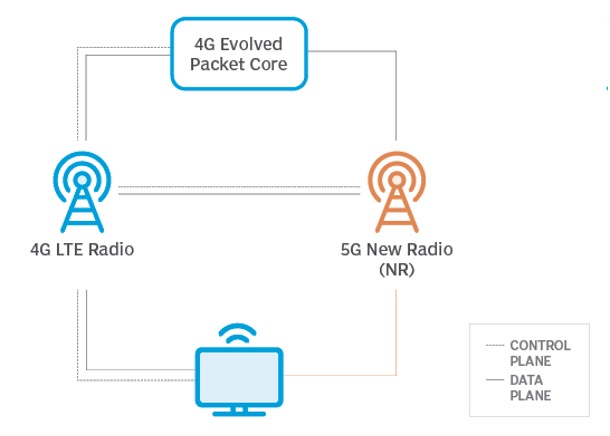Release 15
Release 15 was the first release for 5G. This release was divided into 3 phases. The first phase was significant because it introduced us to 5G and its initial functionalities. It brought increases in capacity and speed, as well as mobile broadband, which set the stage for more advanced technologies. 5G New Radio (NR) technology was also introduced, as were specifications for the development of 5G NR hardware. [L3] Non-Stand Alone (NSA) 5G operation was also described in this phase . It is 5G that cannot work alone and relies on the support of existing 4G LTE networks. NSA includes both 4G and 5G base stations, but 4G takes precedence because the connection is managed via the 4G LTE CP (control plane). So the signals travel to the primary 4G base station. [L4] [L3]

Fig. L2: Non standalone 5G [L4]
The second phase introduced the SA (Stand Alone) 5G architecture, which allows 5G to exist without the foundations of 4G LTE. However, the 4G LTE network still remains, it is used when 5G coverage is weak, or is used as a replacement/support network in case of outages. With this architecture came the full set of 5G features, ultra-reliable low latency and network core architecture that makes SA architecture possible.
![Non standalone 5G [L4]](http://moodle.mmclab.eu/pluginfile.php/27/mod_page/content/6/5GSSA_L3-sk.jpg)
Fig. L3: Non standalone 5G [L4]
The third and final phase was delayed by 3 months. The main reason for the boo is that engineers have been busy fixing bugs in the Standalone 5G NR specifications. This latest drop included several different variations of the SA and NSA versions of 5G that carriers like AT&T and some in Europe have shown interest in. They may provide stepping stones to transition from NSA to SA for some operators, but whether anyone will ever use them at all is up for debate.